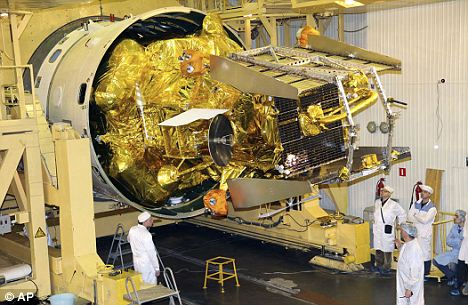Phobos-Ground, the $170 million Russian probe, is now heading back to Earth and will crash between January 6 and January 19, but it’s not possible to predict where until a few days beforehand.
The Phobos-Ground craft, which was supposed to travel to Phobos, one of Mars’s two moons, became stuck in Earth orbit after its thrusters failed.
What’s more, one of the probe’s gauges has a small amount of radioactive Cobalt-57 and it is carrying seven tons of toxic fuel in the form of nitrogen teroxide and hydrazine.

Russia’s space agency says the fuel should burn up upon re-entry and the Cobalt-57 won’t pose any threat of radioactive contamination.
However, several dozen fragments with a total weight of up to 200 kilograms (440 pounds) will fall on the Earth’s surface.
The space agency says that the rough area where the probe’s fragments will fall could only be calculated a few days ahead of its plunge.
James Oberg, a NASA veteran who now works as a space consultant said: “What was billed as the heaviest interplanetary probe ever may become one of the heaviest space derelicts to ever fall back to Earth out of control, an unenviable record.”
The Phobos-Grunt craft was successfully launched by a Zenit-2 booster rocket from the Russian-leased Baikonur cosmodrome in Kazakhstan on November 9.
The craft separated from the booster about 11 minutes later, and was to fire its engines twice to set out on its path to Mars.
Russia’s Federal Space Agency chief Vladimir Popovkin said neither of the two engine burns worked, probably due to the failure of the craft’s orientation system.
Embarrassingly, the effort to restore control over the probe was hampered by a limited earth-to-space communications network that forced Russian flight controllers to ask the general public in South America to help locate the craft.
Amateur astronomers were the first to spot the trouble when they detected that the craft was stuck in Earth orbit.
